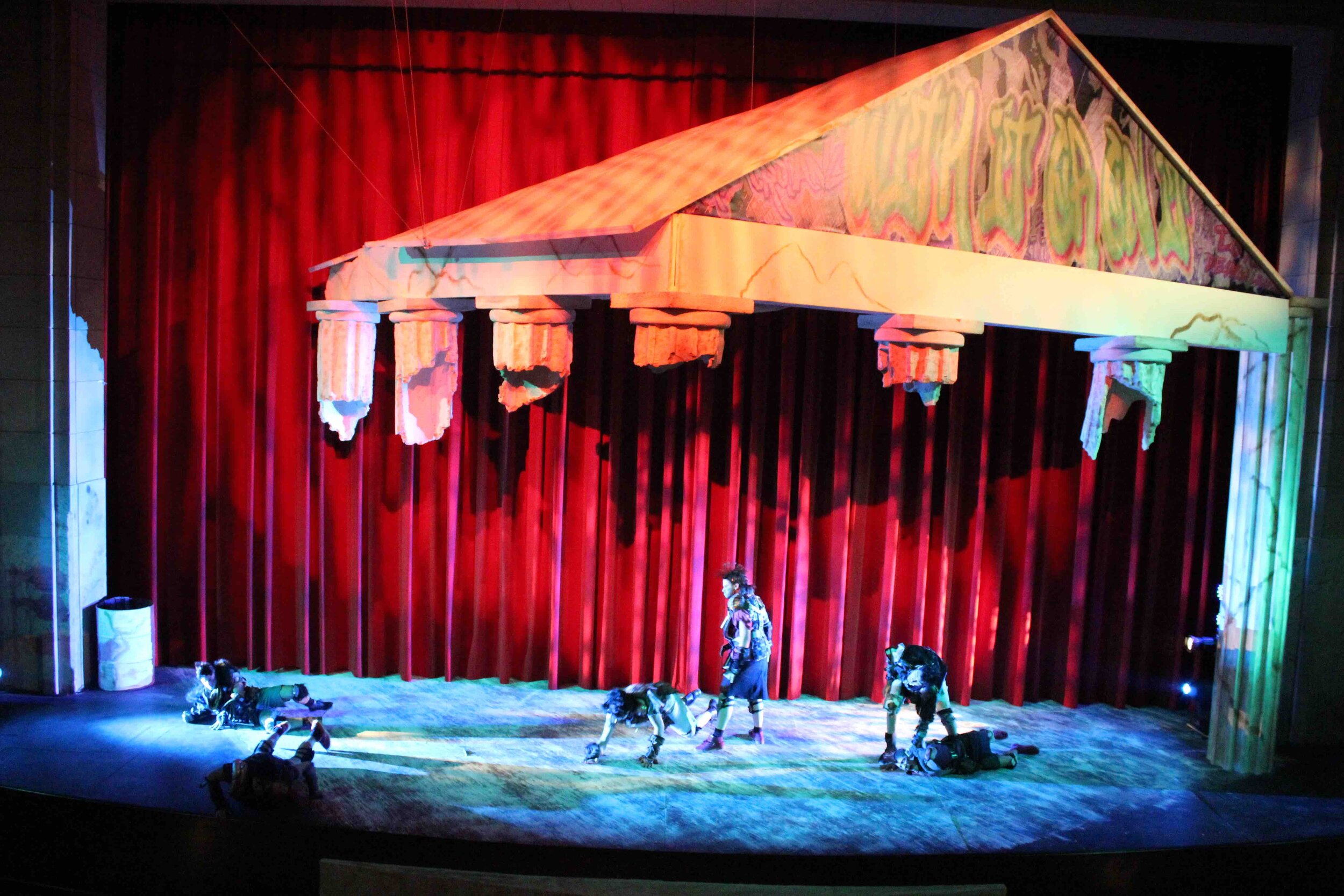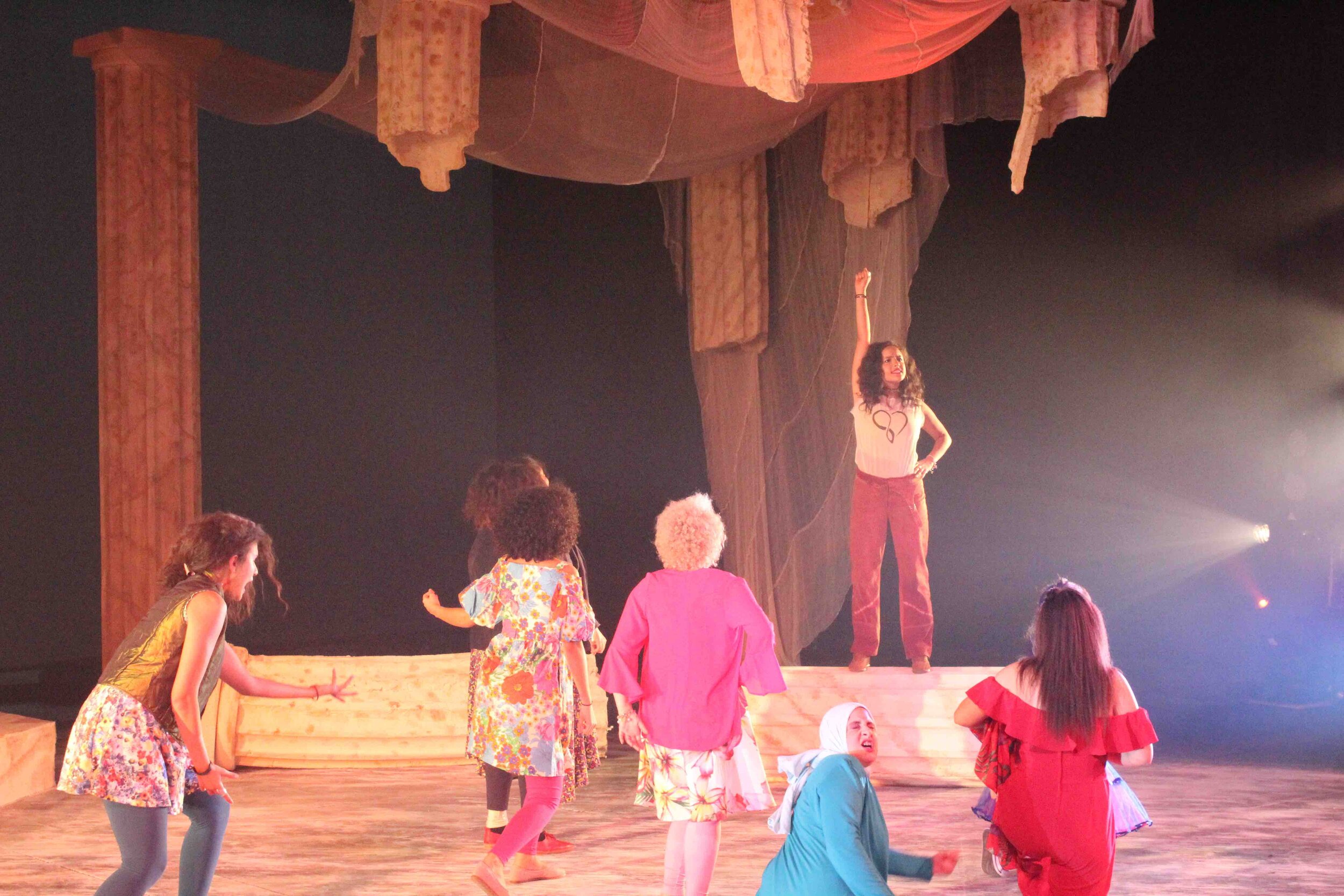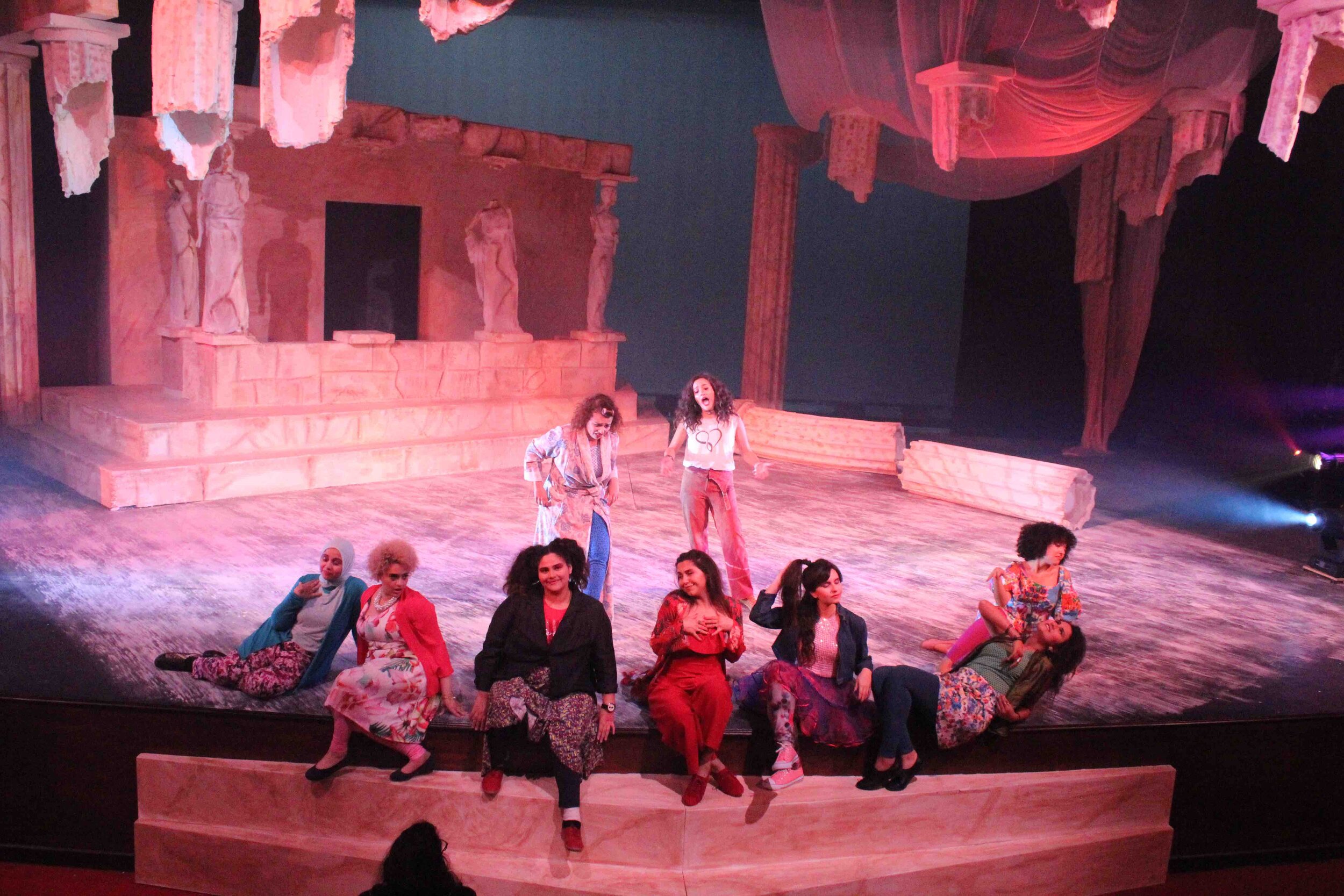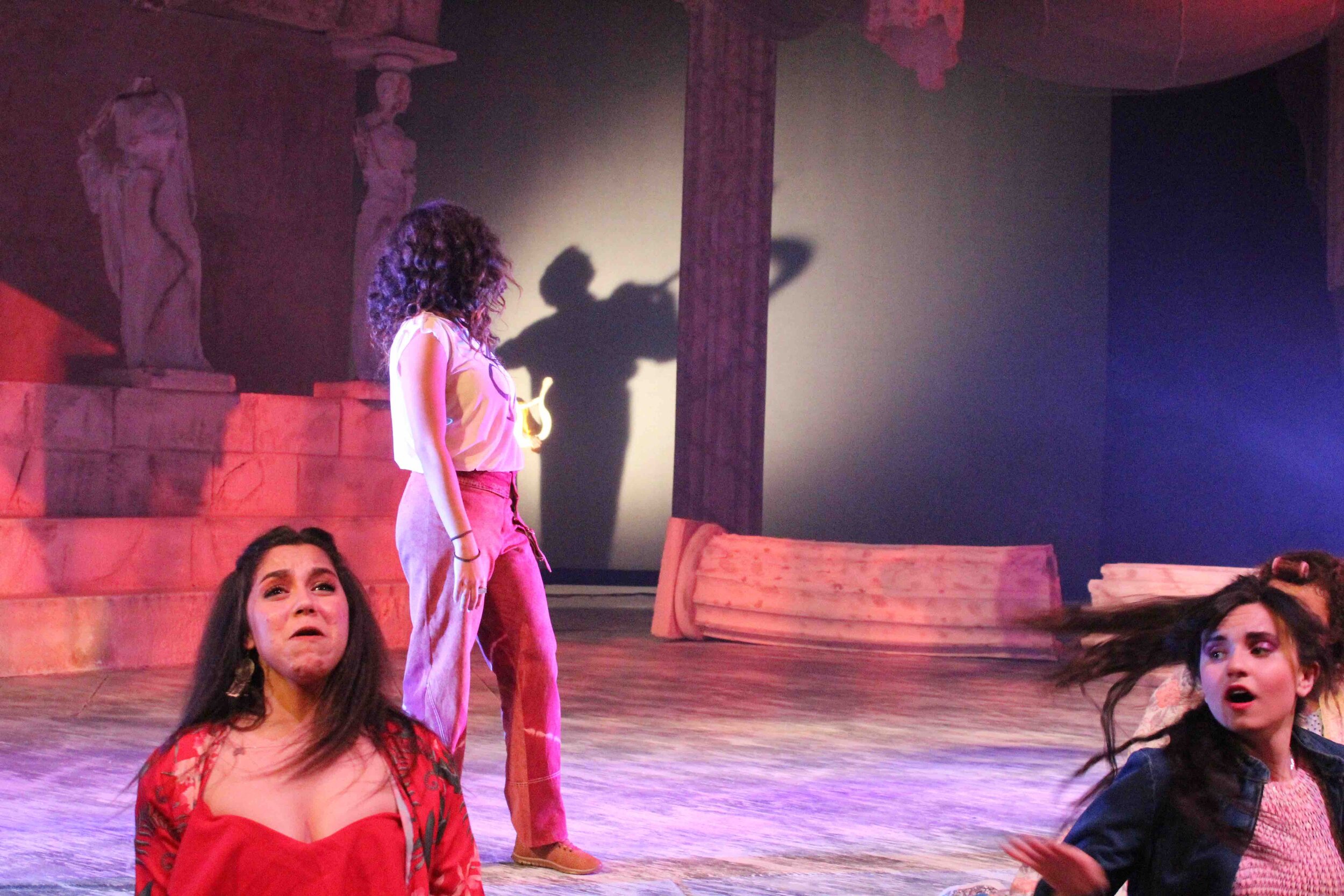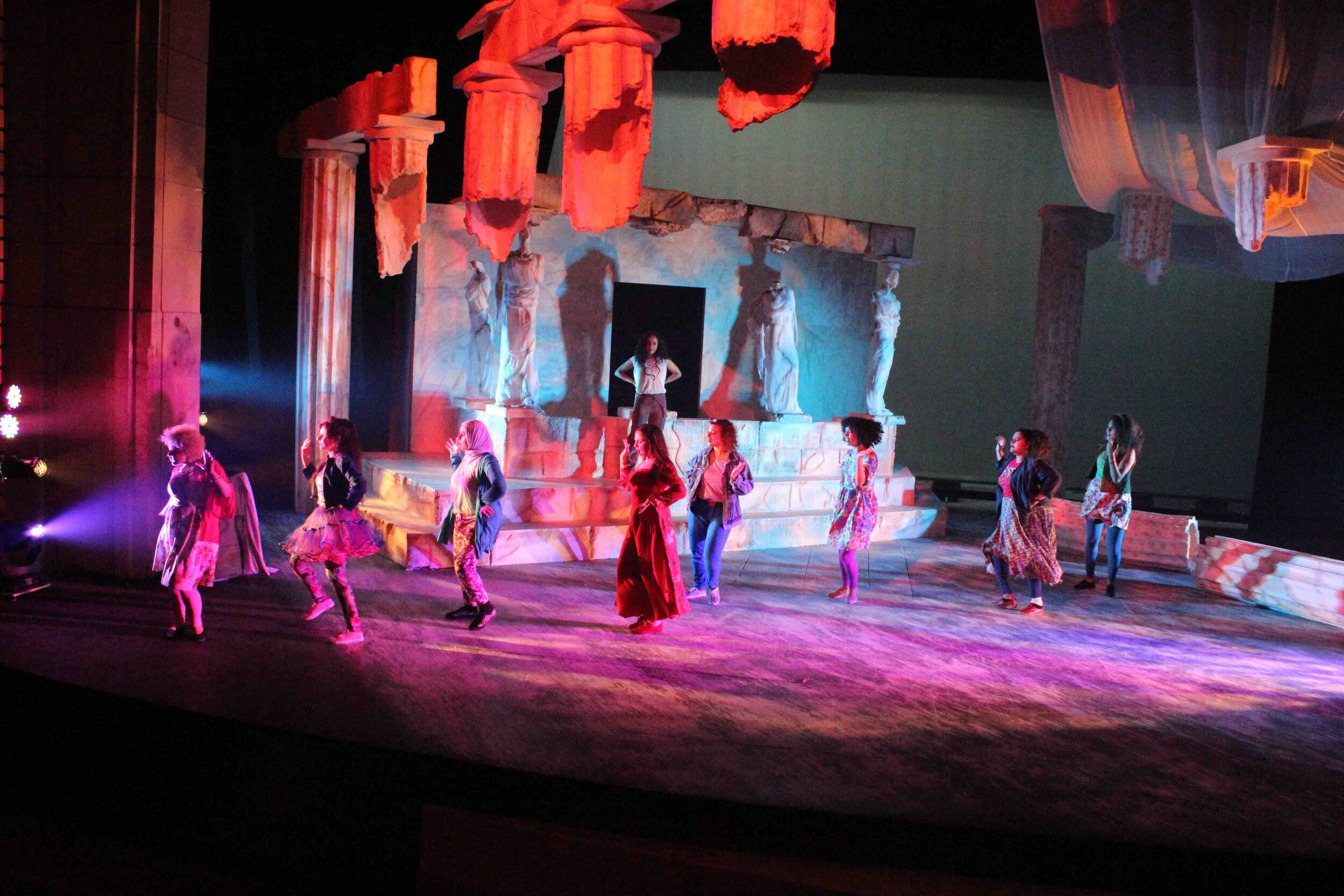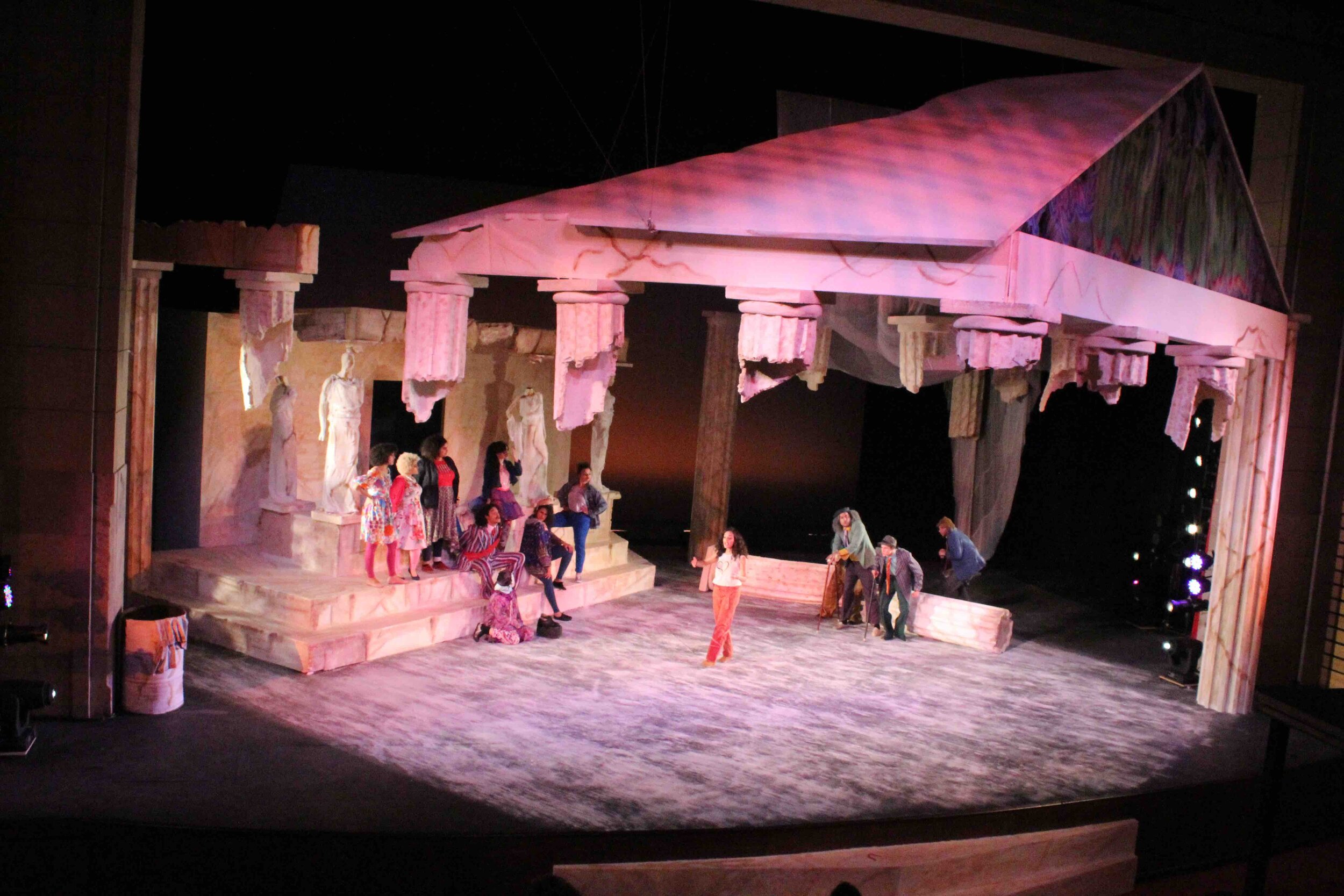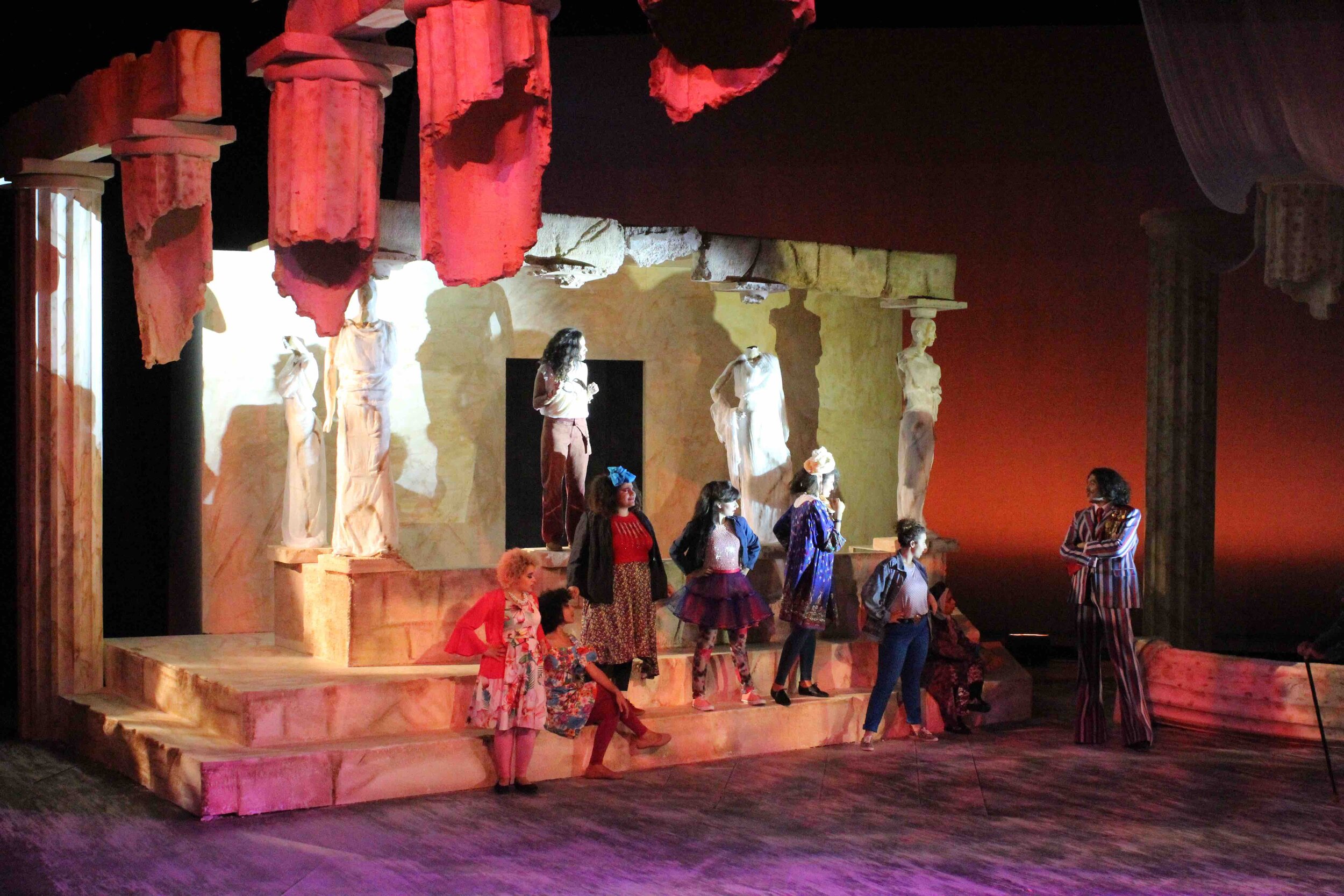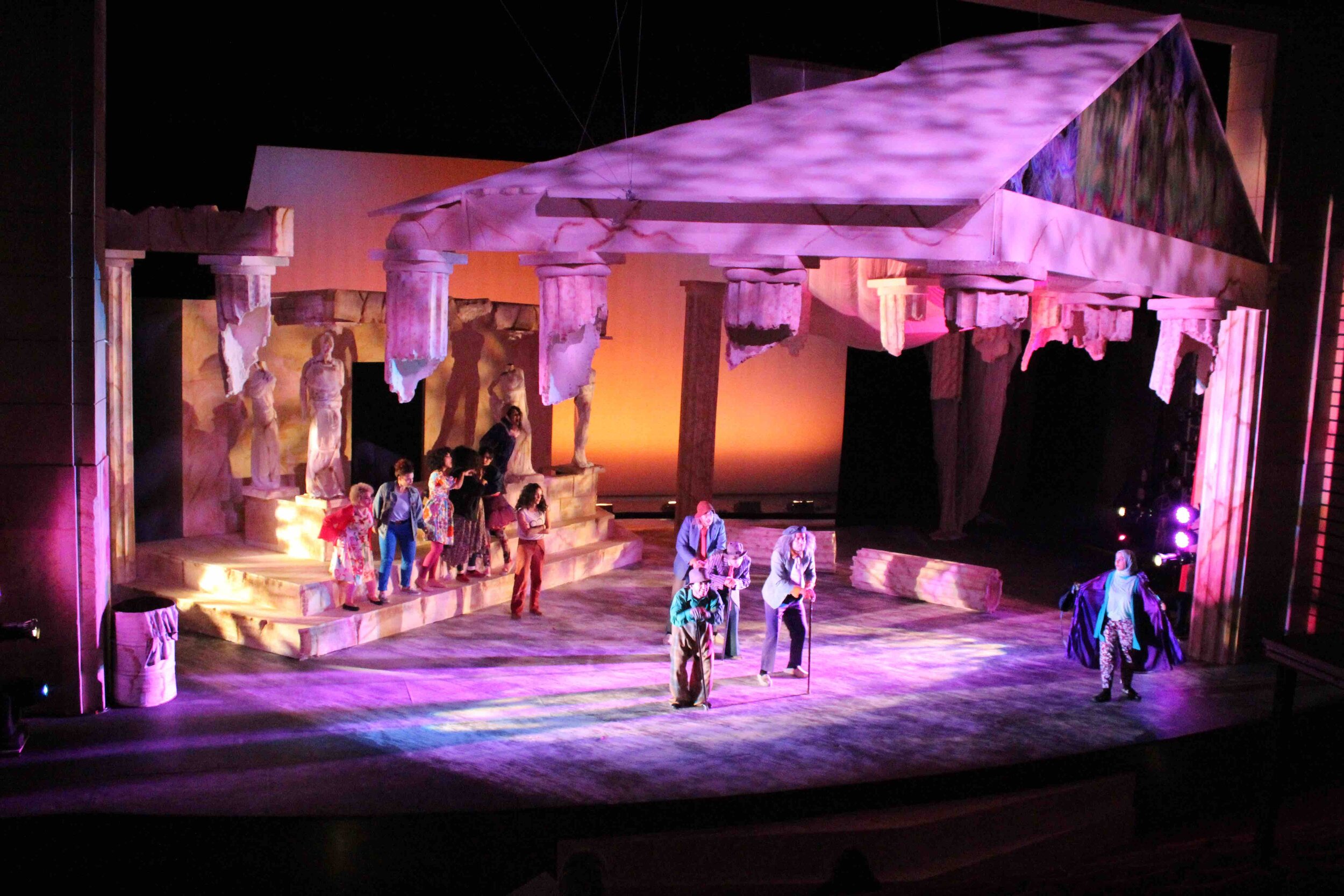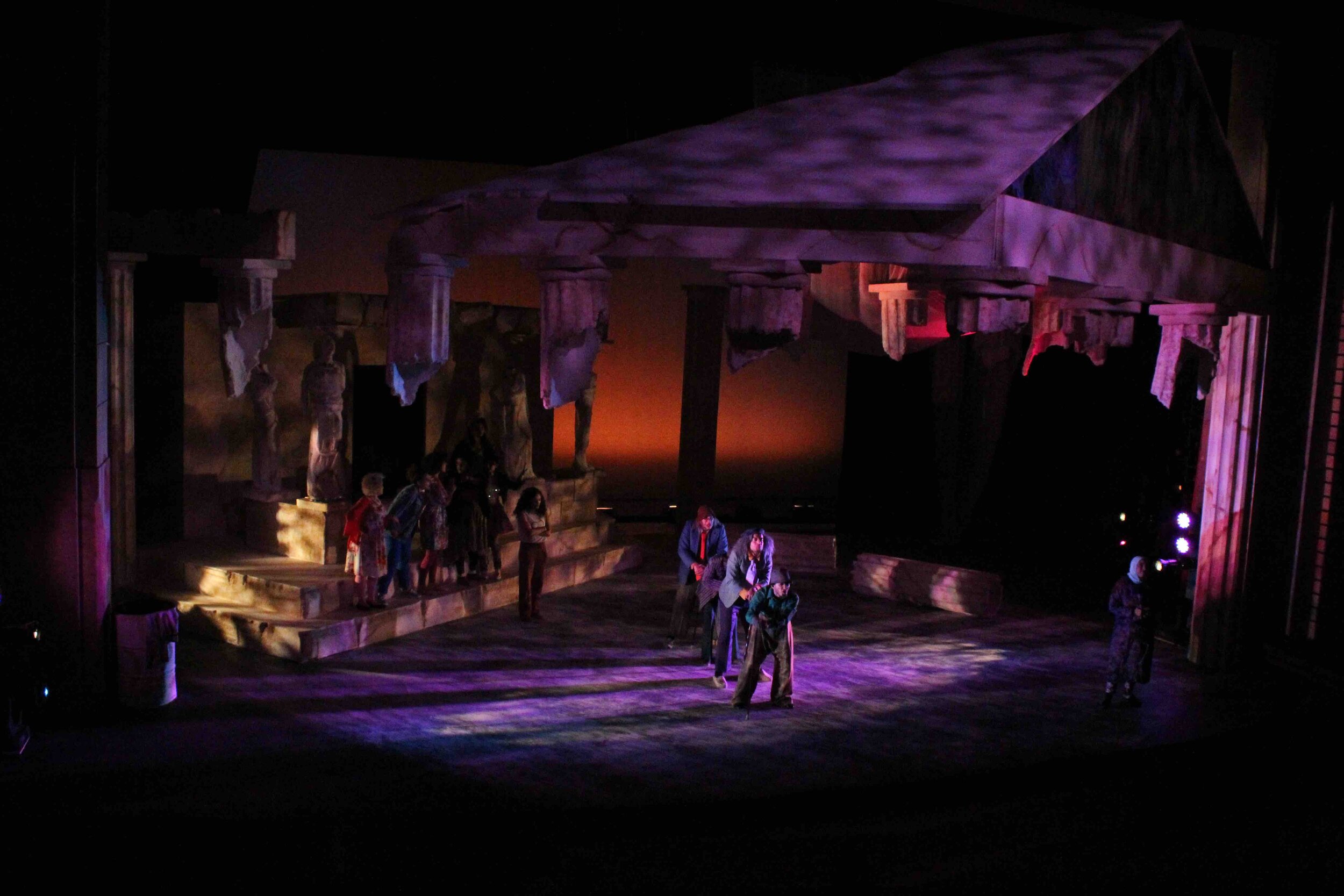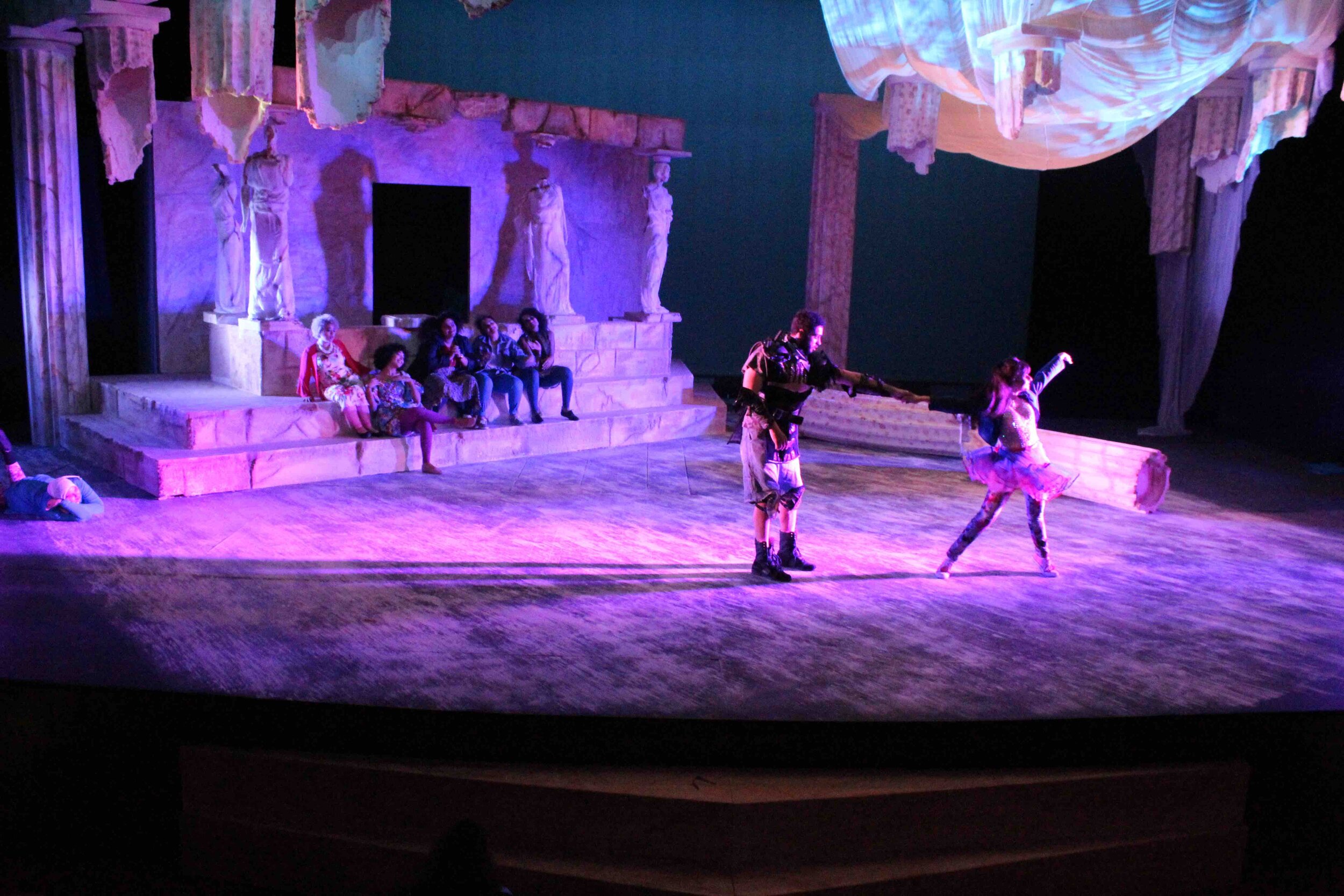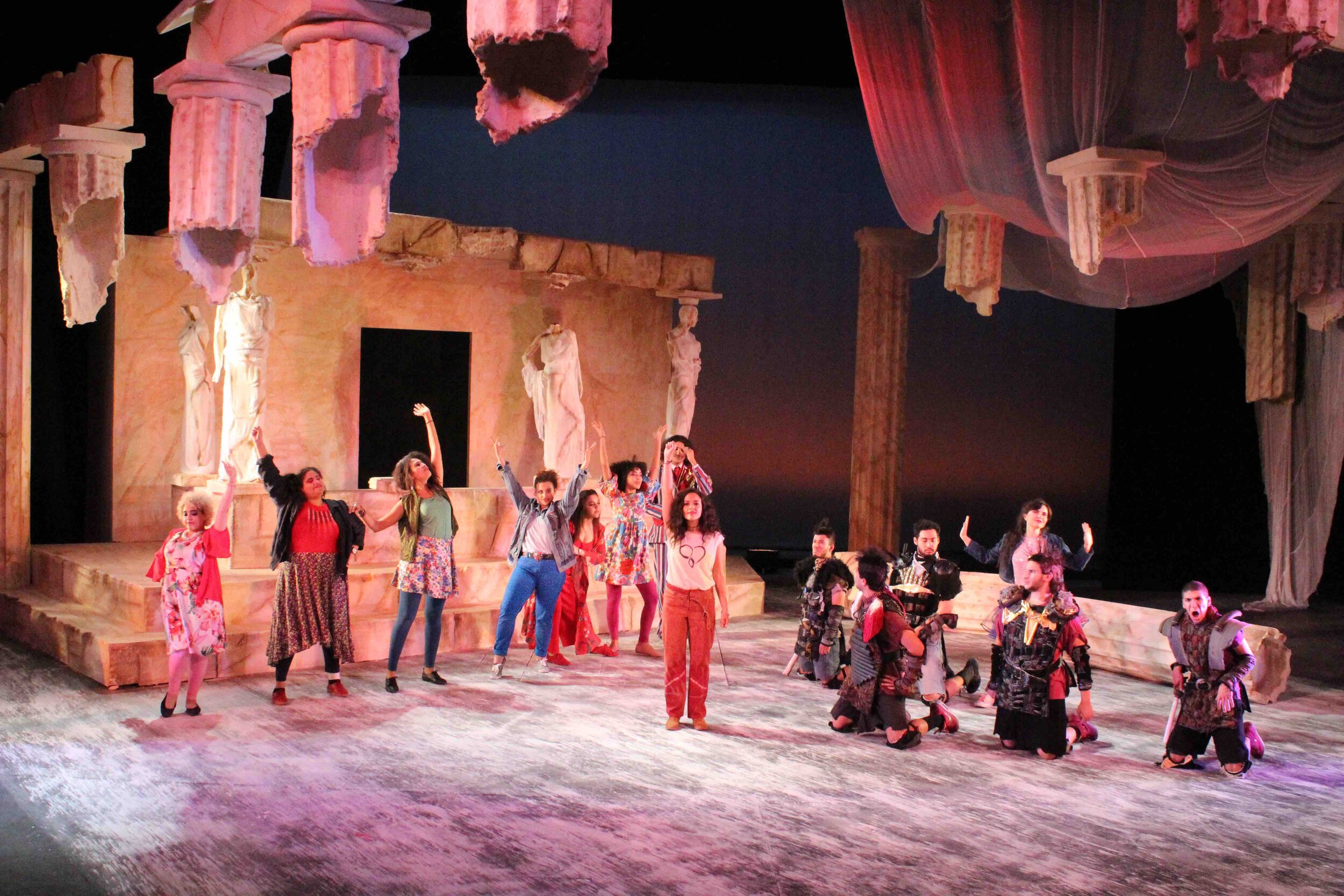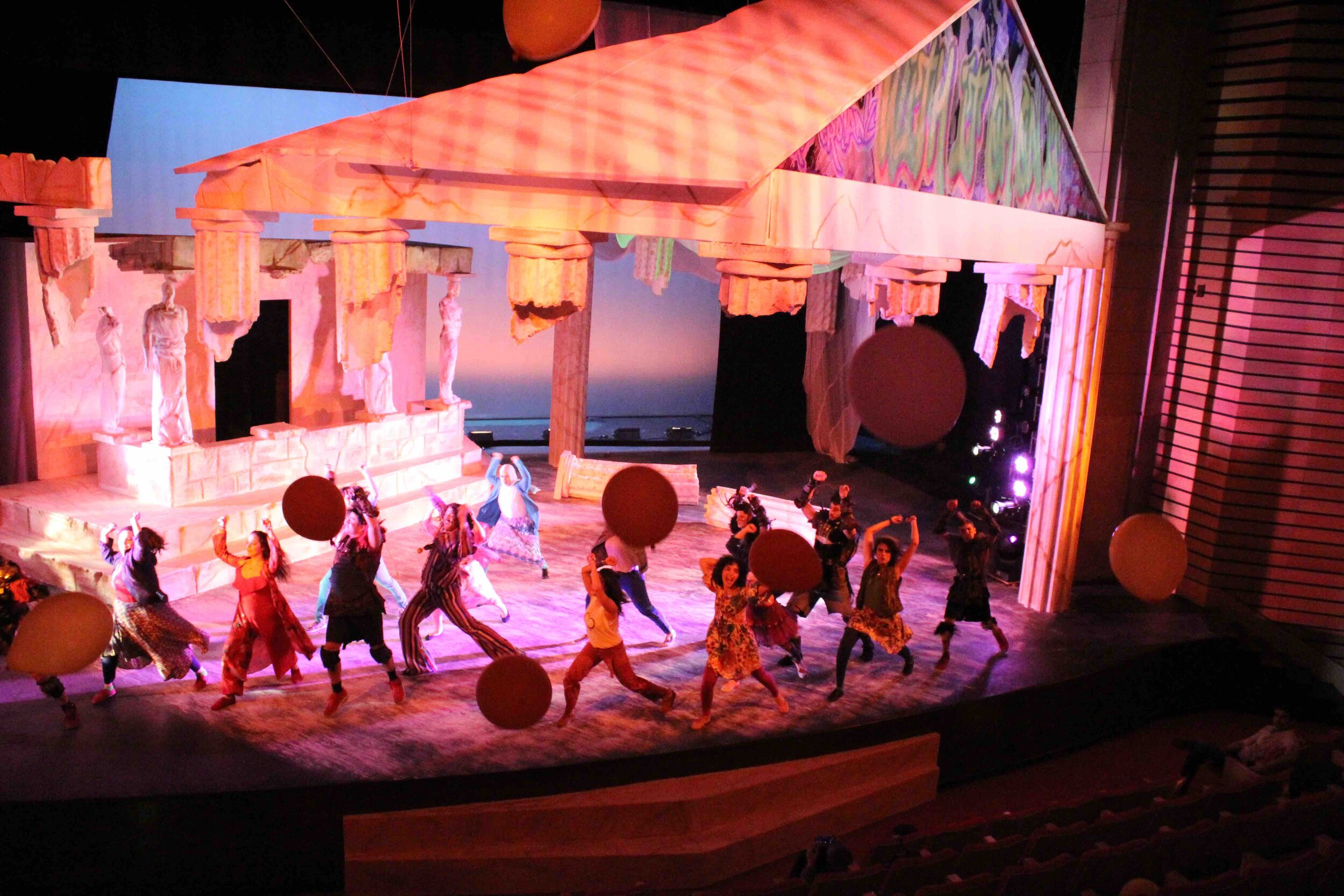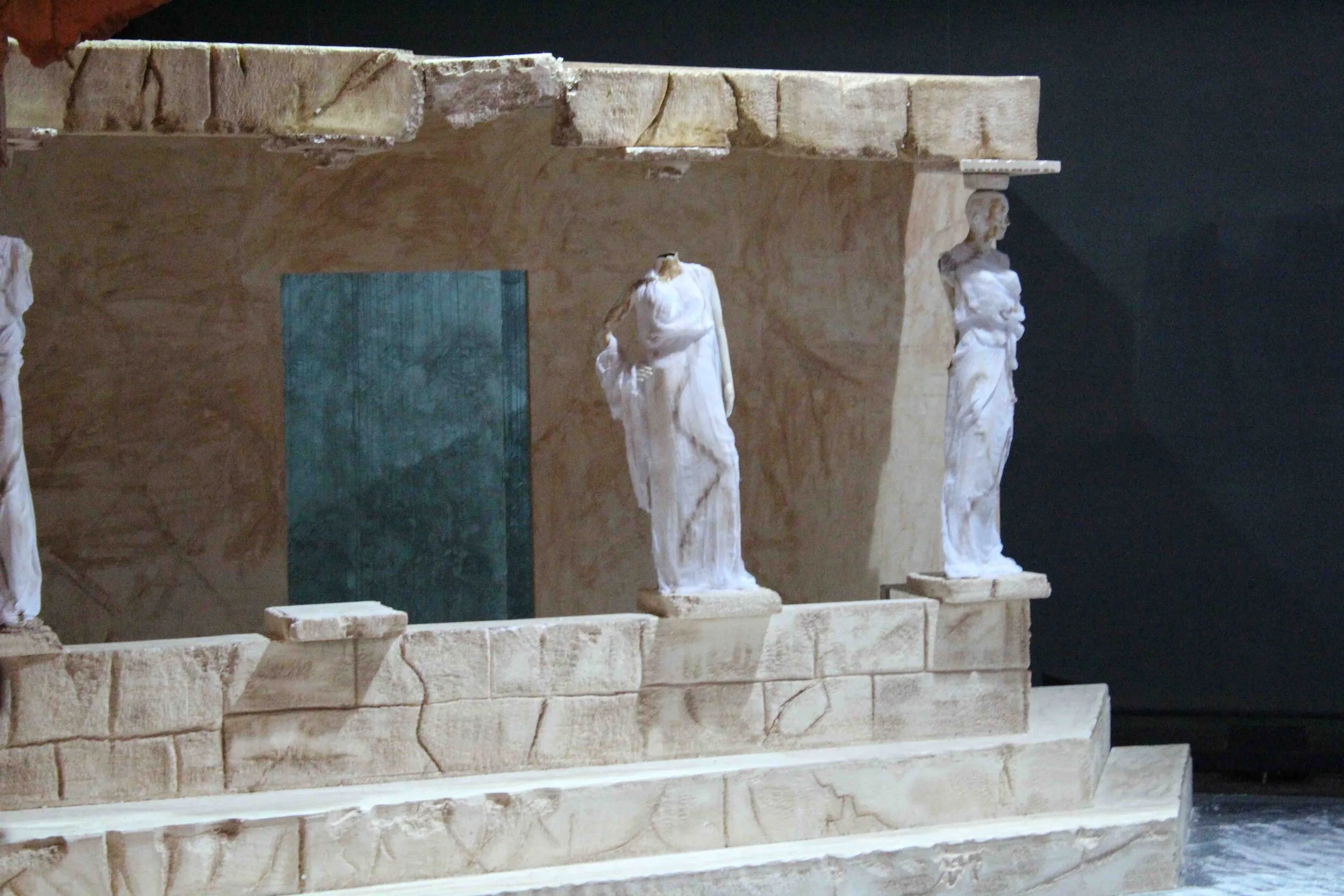Project 3- Lysistrata
The production of Lysistrata, by Aristophanes (adapted by Ellen McLaughlin) was directed by Jillian Campana and opened in March of 2018. This adapted script was first performed at the Brooklyn Academy of Music, and numerous other theaters around the US, in 2003 as a way of protesting the Iraq War. The original script was cut to a running time of 80 minutes and concentrated more heavily on the story of the women. The language is very contemporary and led the director to want a more modern/eclectic take on the original Greek story. I had been familiar with an art style referred to as fractured classicism and offered that as an initial approach. I took images of the Acropolis in Athens as a departure point and deconstructed it, while keeping the same aesthetic feel. The director also wanted the play to have an “in your face” attitude so we decided to have a large graffitied pediment appearing to come through the audience and jut out over the first few rows of the audience. Matching the overhead pediment, a set of steps would be placed at the very downstage edge of the stage that would allow the actors to sit and move mere feet away from the audience. The rest of the set continued towards upstage right, and not only framed the sides of the stage with hanging broken columns, it also created a ceiling of varying degrees of solidity. The visual flow of the angle of the set was directed towards upstage right where there was a shattered version of the Erectheion of Athena and Artemis, complete with broken caryatids.
Lysistrata- front view
The director was pleased with this initial idea and we continued to pursue and refine it. I provided her with a strategies presentation that showed a couple variations on what we had discussed (https://www.youtube.com/watch?v=eDj4CwKA2MU). As our lighting discussions were intertwined with the initial set discussions, I was able to provide a walkthrough that showed what having visible lights placed around the set would look like (https://www.youtube.com/watch?v=X49yj8vLcOI). Of the options presented, a sheer white cloth was decided on for the draped “ceiling.” This would allow a more dynamic range of colors for the lighting. The floor treatment was an abstracted image from the ground of the Acropolis itself, but stretched and given directional brush strokes to match the upstage right to downstage left flow of the rest of the set. With the approval of the director, drawings were submitted to the technical staff and the build started.

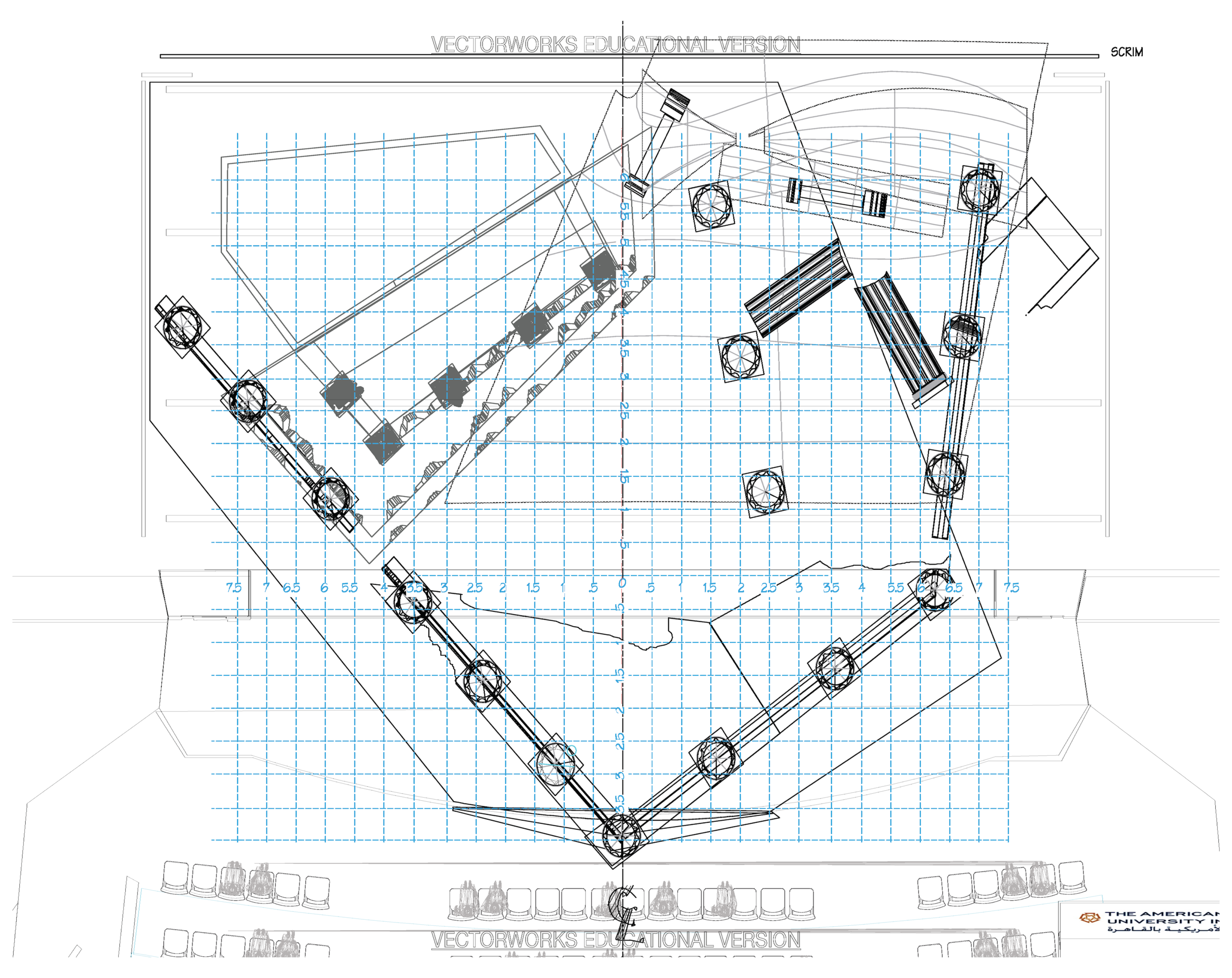
The above plans show the collaborative nature of the technical staff at AUC. Specific dimensioning on the plan proved too confusing, so a half meter grid was added for reference. This allowed a much faster reading of the correct placements.
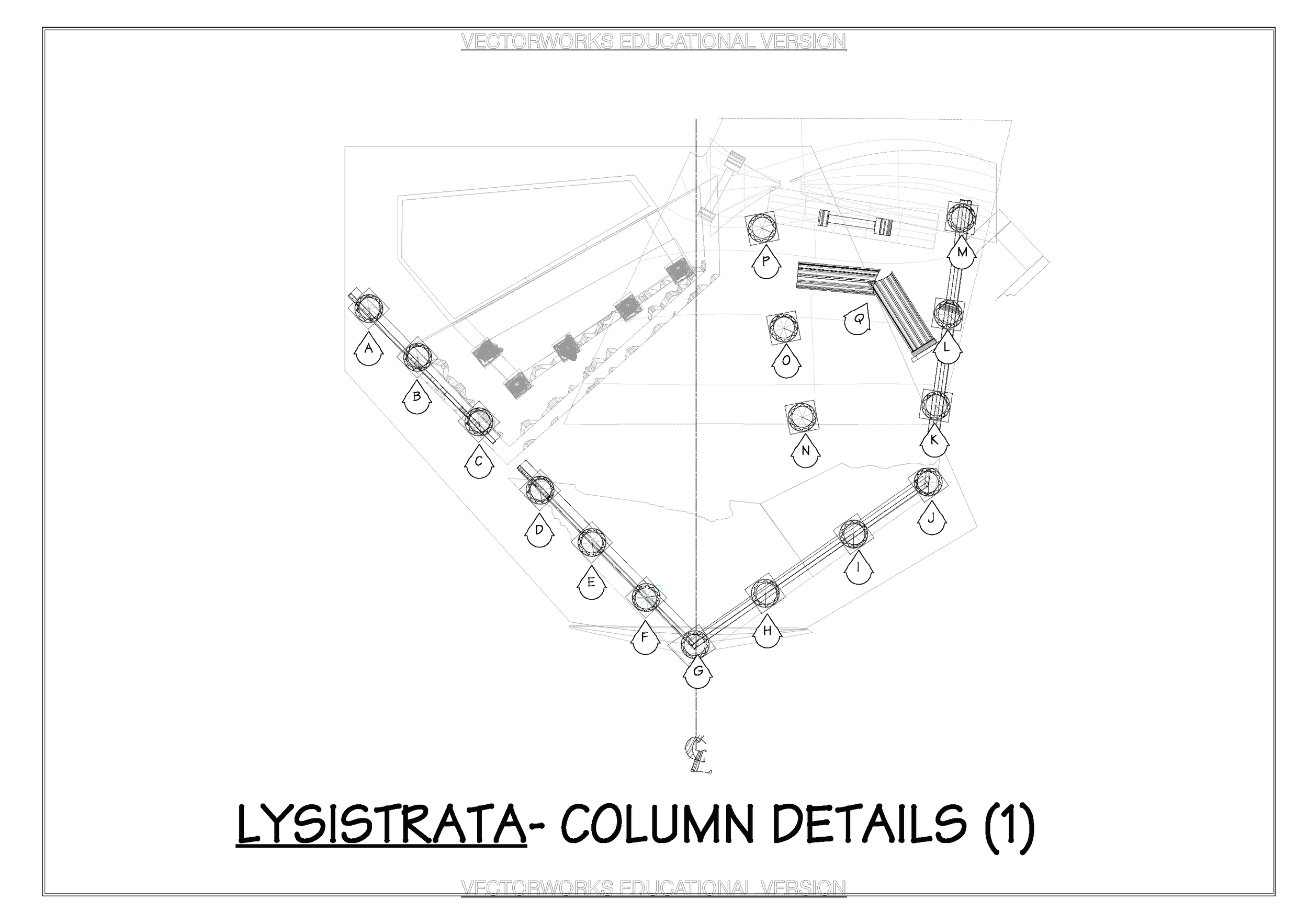
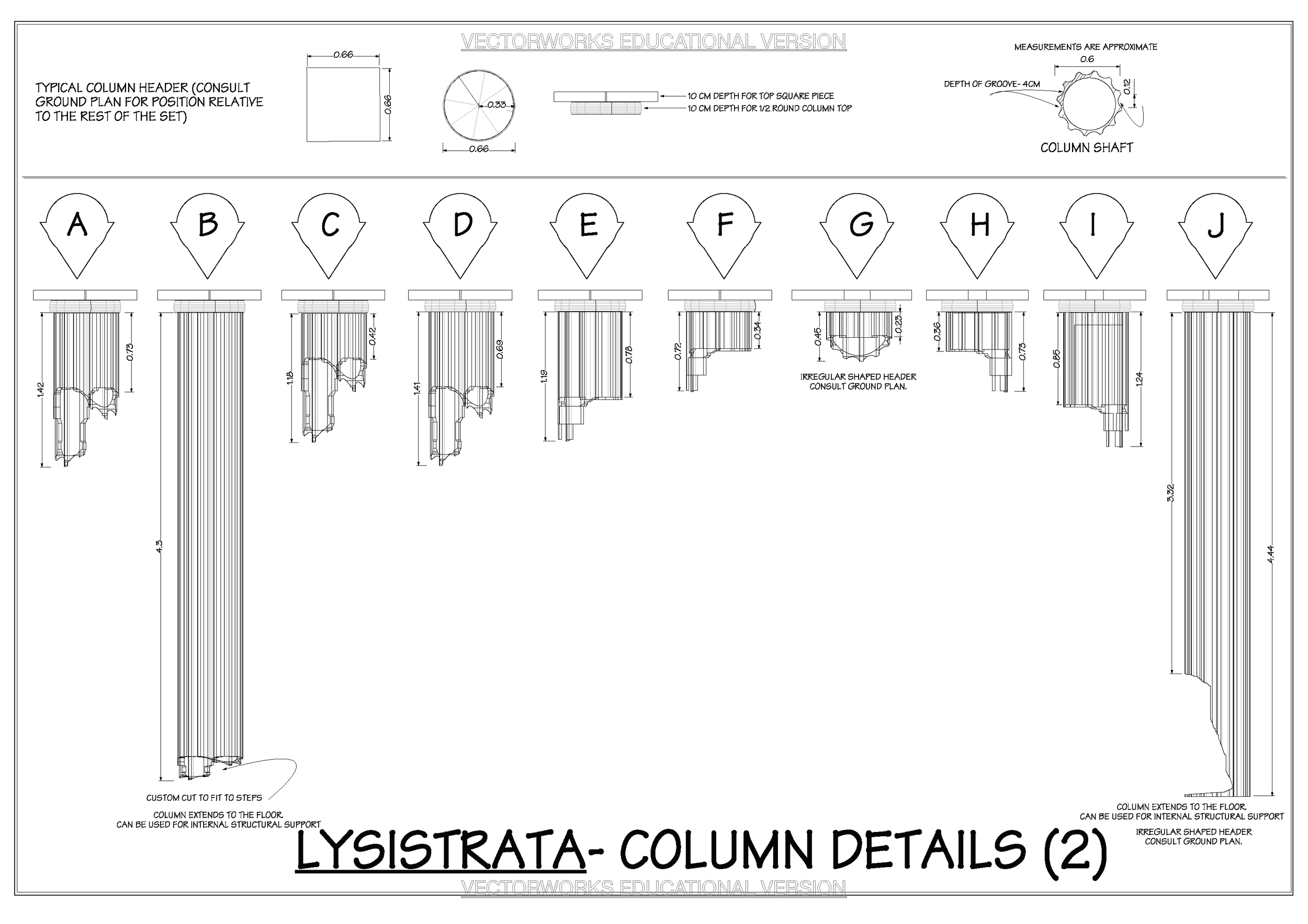
The smaller columns were planned on being made using a template, filled with an A-B expanding foam then cut and shaped to the specifications. I was fortunate to have a student assistant who owned a custom construction business and was able to have the larger columns specially constructed for us. He received an A for the assignment.
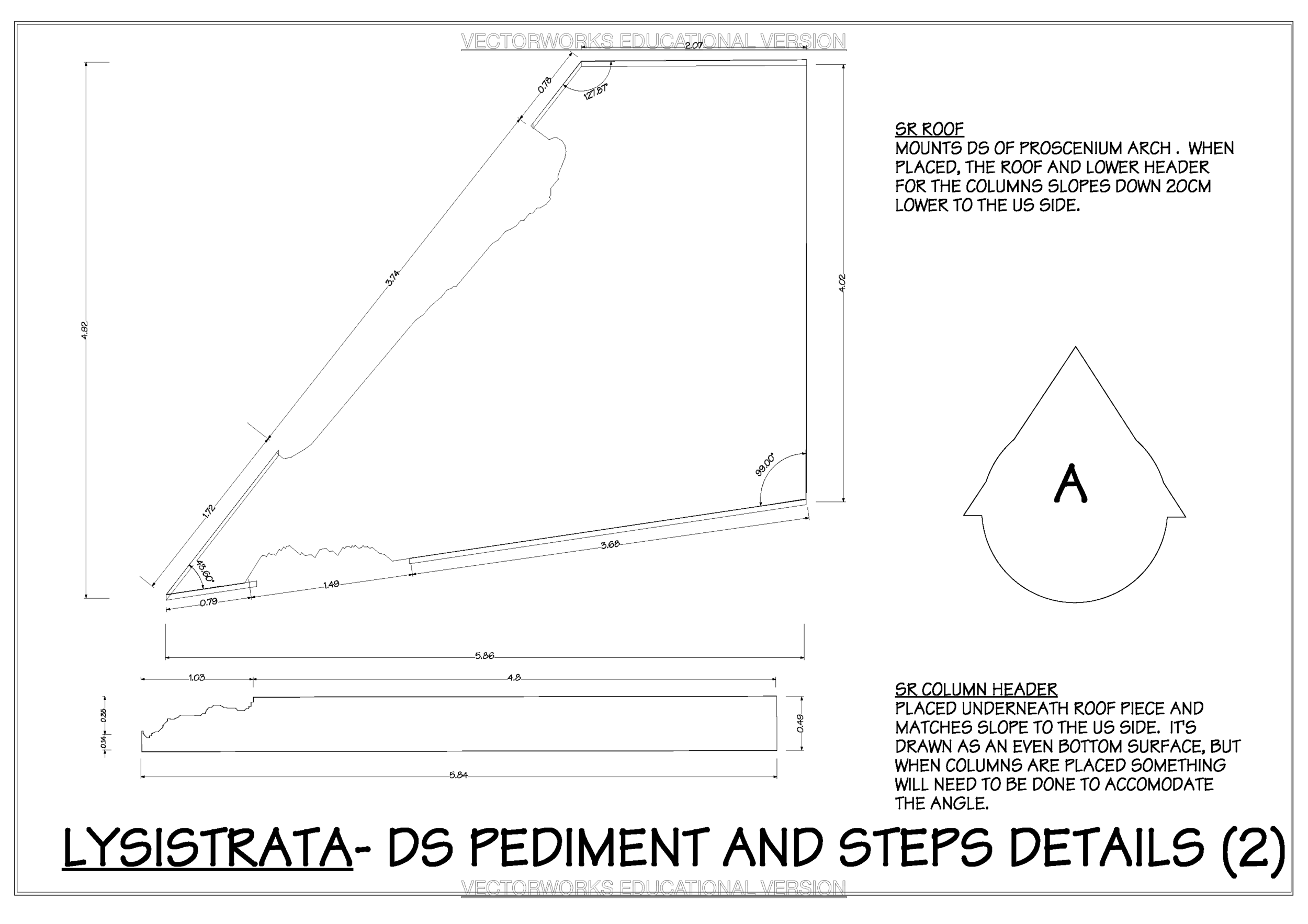
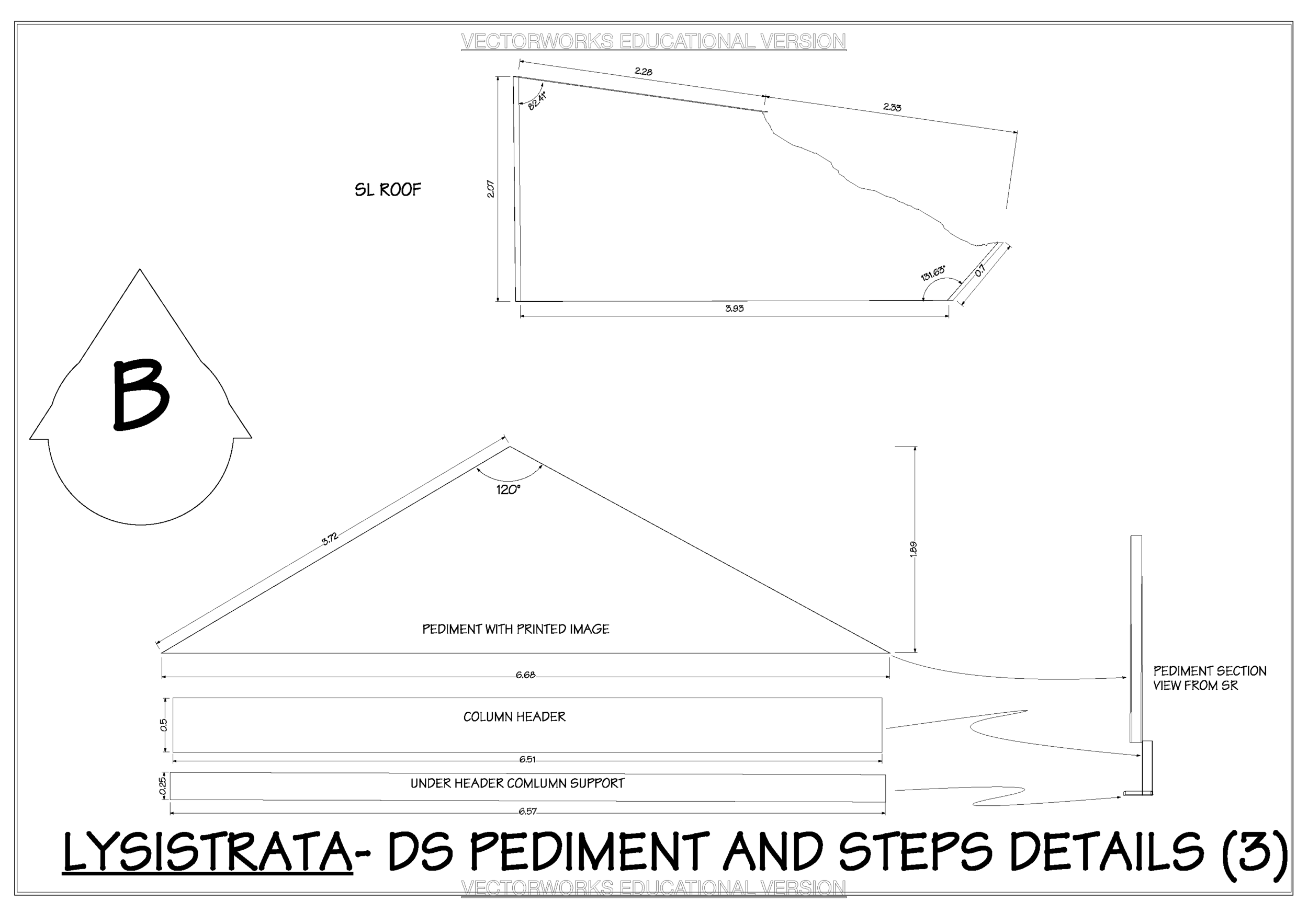
The pediment had to be constructed in the shop and brought into the theater to install in one day. The AUC program is blessed with presenting the Metropolitan Opera live broadcasts in the Malak Gabr Theatre on a special projection screen. For the days of the broadcast nothing can be in the way of the screen. There was a broadcast two days before we started the technical rehearsals, so this complex piece had to be installed on the day in between.
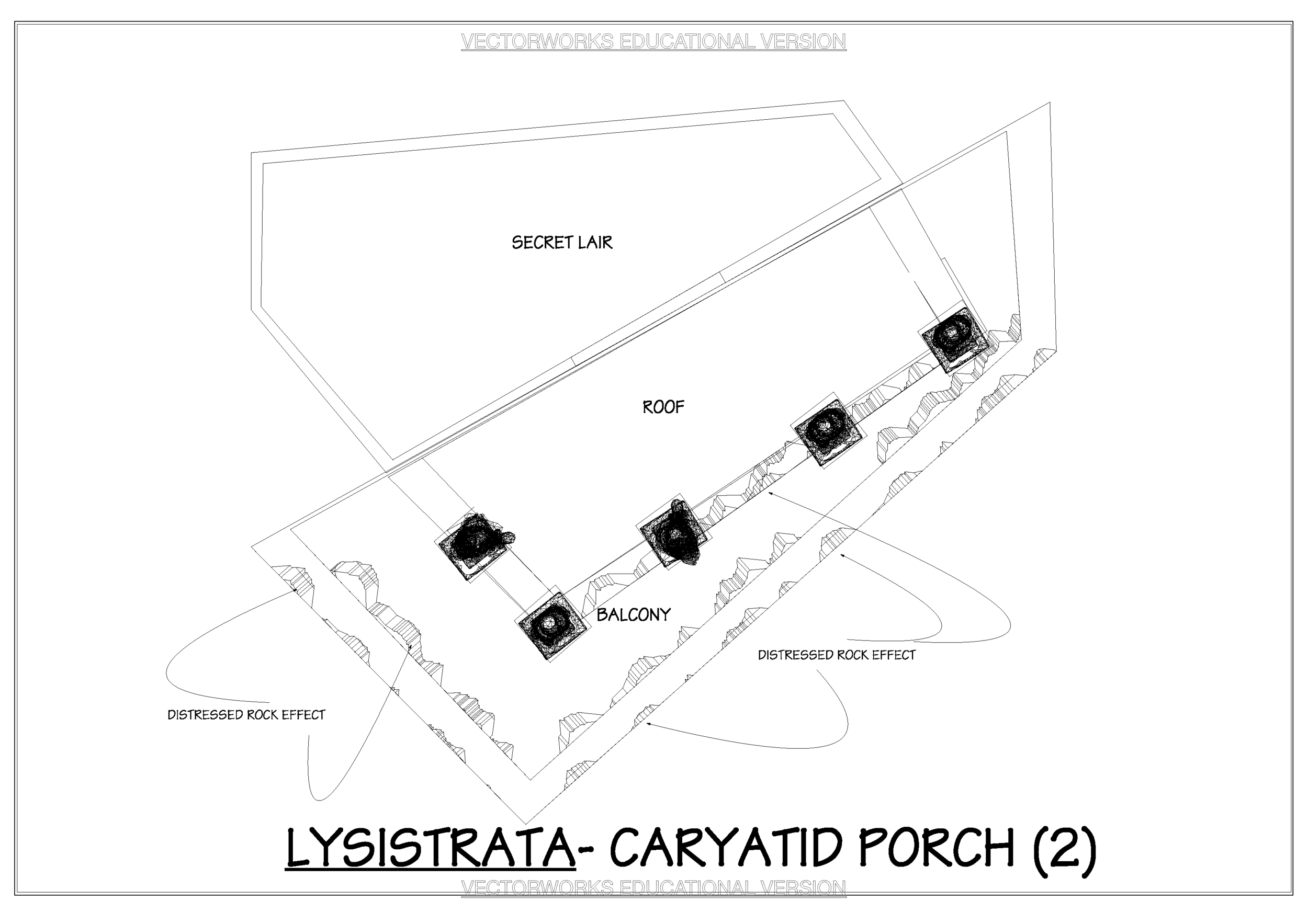

As with many theater storage areas, sometimes there is a collection of strange things. AUC storage had a large collection of mannequins. These were taken, partially disassembled, draped in muslin and painted with a white paint and glue mixture to create the proper sculptured effect. The distressed rock effect was achived by facing the wood structure with foam and then carving it to look worn and broken. This marble-like paint treatment was common throughout the set. The majority of the set was painted in this way by a single contract student who didn’t realize that she had a knack for painting. She started with the technique on these steps and within several days was painting the highest columns 6 meters in the air while in a GenieLift.
Lysistrata- Caryatid porch in process
Lysistrata- Pediment paint detail
The paint elevations were distributed the typical way in color print outs and on iPhones and tablets. The above is an example of an amazing thing about Cairo, Egypt that I discovered at this time. There are many companies that specialize in large size printing on vinyl. This comes from the 1000’s of billboards that line the highways in the region with the images printed on a durable vinyl. AUC has a good relationship with one that prints all the celebration and publicity materials of a similar nature. This image above was created using images from the original pediment at the Acropolis and graffitied with various Greek “slogans.” The phrase “With it or on it” was something a Trojan mother would say to her son as he left for battle, referring to his shield. Either come back with it, or carried in honor on it. This image would have been incredibly difficult to paint, but the image was sent to the vinyl printer and it was delivered the next day. And even better, the printing comes from a separate budget so it didn’t come out of the scenery budget.
The lighting for this play was intertwined with the visual aesthetic of the scenery. A more contemporary feel was called for, and since the scenic designer had placed a huge obstacle of ceiling pieces in the lighting designers way, the majority of the lights were designed to be close to ground level. Four small 1 meter booms were placed around the stage with template units, LED pars and moving lights on each one. Proscenium booms were used to fill in under the set and color scrollers in the low box booms were the main crux of the design. Because this was so different than standard and would create such a unique look, communication with the director early on was essential. She was given a strategies presentation (https://www.youtube.com/watch?v=Mrs2uCRbvJw) and even an animation to suggest some of the beats of the prologue (https://www.youtube.com/watch?v=lF2AhvAiACU, https://www.youtube.com/watch?v=whQybpIz0X8). The ideas and the storyboard of how the play would be cued was received well and work was begun on the hang and focus. The focus had to be completed without the pediment in place, but since the lights had been focused in the Vectorworks virtual environment it all fell into place relatively easily.
Lysistrata- Light plot
The technical and dress rehearsals went incredibly smoothly. I introduced AUC and Egypt to the program Q-Lab for the sound designer, and the majority of the ongoing sound issues that had limited the capabilities of the program were taken care of. Even though the director and I had never worked together before, we had established a language though our meetings and the strategies presentations that allowed us to lay out the initial cues quickly, and then give me time to improve the design with each subsequent run through.
